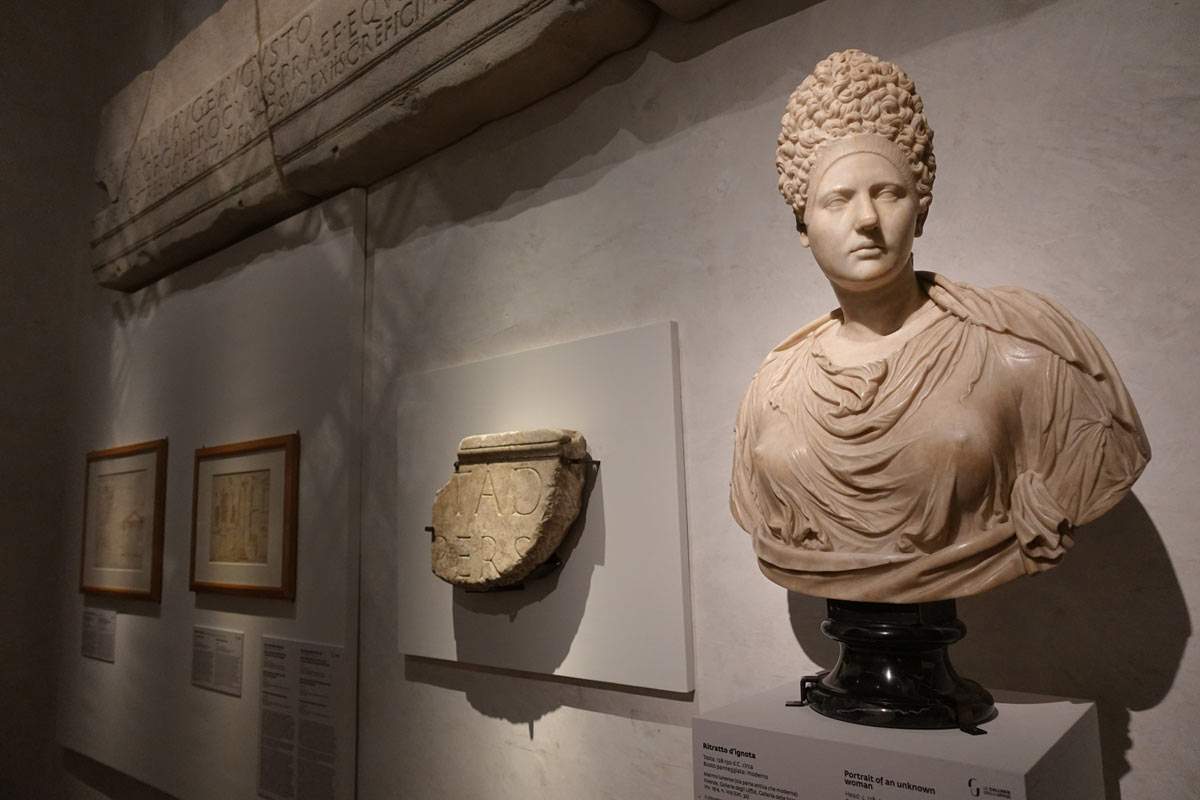All the Women of the Empire on Display at the Uffizi: From Nov. 3, 2020 to Feb. 14, 2021, the Florentine museum is dedicating an exhibition to female power in ancient Rome. Entitled Empresses, matrons, freedwomen, curated by Novella Lapini under the direction of Fabrizio Paolucci, the exhibition consists of thirty works, including sculptures depicting Agrippina Minor, mother of Nero and Domizia Longina, wife of Domitian, to explain the many (and relevant) roles of women in the society of the time.
Roman women of the imperial age, their stories, their secrets, their struggles for civil, political and economic emancipation: these are some of the topics of a review that makes use of works from the archaeological collection of the Uffizi, alongside important loans from the National Archaeological Museum in Florence (coming soon are some precious gold coins from the Roman era that allow us to look from theinside the female role in the propaganda of the imperial house), and from the National Central Library of Florence, from which come 16th-century codices that dialogue in the exhibition with drawings from the same period preserved at the Uffizi Drawings and Prints Cabinet, showing the different depictions of the ancient epigraphs in the exhibition.
The narrative is divided into three sections and aims to lead the audience through the lives of Roman women in the first two centuries of the Empire (from the beginning of the 1st to the second half of the 2nd century CE), dwelling on the positive and negative models embodied by the empresses and prominent women of the imperial house and highlighting the possible public roles for women, but it also wants to focus on the stories of daily life of matrons and freedwomen. Thus, among the protagonists here is Junia Atte, first a slave and then a freedwoman married to her patron, the victim, probably under Domitian’s reign, of a real curse cast on her by her husband, who was abandoned after the death of their common daughter: the terrible words spent against her are inscribed on the altar dedicated to the maiden. And then again Pompeia Trebulla, a powerful matron of the elite of Terracina who, some forty years earlier, under Emperor Claudius, was able to have the temple dedicated to Tiberius and his mother Livia restored at her own expense, thus placing her name next to that of the Augusti in a significant gesture of female independence and power.
“The Uffizi Galleries,” says the museum’s director, Eike Schmidt, “in recent years have devoted a great deal of attention to issues of gender history, overturning the traditional and traditionalist image of women and showing instead their creative, strong and indomitable side. The exhibition is also a unique opportunity to allow our visitors to admire splendid pieces from our very important archaeological collection, which will amaze even our most attentive audience.”
“At the heart of this exhibition,” emphasizes curator Novella Lapini, “is the history of Roman women in the first two centuries of the Empire, analyzed both from the point of view of the officially proposed female model, embodied for better or worse by exponents of the domus Augusta, and in relation to the new possibilities for action created in a dynastic system. In the wake of the prerogatives granted to the Augustas, elected as priestesses of their deified kin and able to benefit entire communities with their acts of liberality, the matrons of the élite in fact inserted themselves more directly into public life, as flaminicas (dedicated to the worship of the new divas), evergeti (benefactors) and patronesses of their municipalities, enacting a gradual but effective gender revolution in the cities.”
For all information you can log on to the Uffizi website.
 |
| Empresses, matrons, freedwomen: women of imperial Rome on display at the Uffizi |
Warning: the translation into English of the original Italian article was created using automatic tools. We undertake to review all articles, but we do not guarantee the total absence of inaccuracies in the translation due to the program. You can find the original by clicking on the ITA button. If you find any mistake,please contact us.